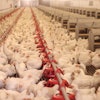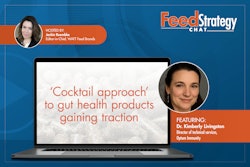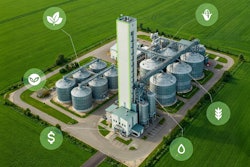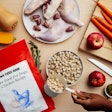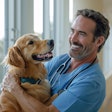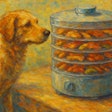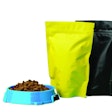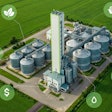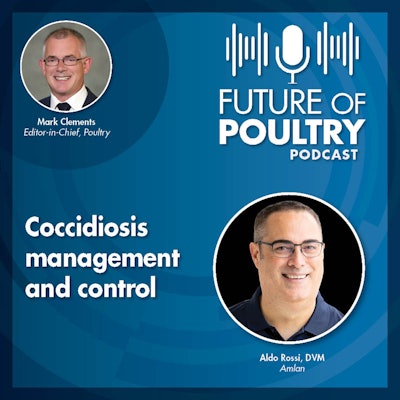
Mark Clements, Editor-in Chief, Poultry: I'm today's host, Mark Clements.
Over a hundred years have passed since the Eimeira life cycle was first described by a parasitologist at Cambridge University in the U.K. Products for its control have been available for decades, yet the parasite continues to be a significant challenge for poultry producers around the world and, according to the U.S. Association of Veterinarians in Broiler Production, it's still the broiler industry's number one disease.
Now, to talk about what producers can do to minimize the impact on their flocks from coccidiosis I'm delighted to welcome Dr. Aldo Rossi. VP of Innovation and Technical Services with feed additive company Amlan.
Aldo, welcome, thank you so much for joining the podcast today.
Dr. Aldo Rossi, Amlan VP of Innovation and Technical Services: Hello Mark, thank you for inviting me to participate in your podcast. I am excited to be here today to talk about a disease with a long history in the poultry industry, as you, spoke earlier about. So, as you mentioned, I do work for Amlan International, which is a division of Oil Dry Corporation of America. primarily in the Amlan division we develop and provide mineral-based health solutions for the animal industry.
Clements: Tell me, perhaps we could start with your interest in coccidiosis, how did that come about?
Rossi: Yeah. even after a century of technological advancements in managing chickens and the production of new products to control the disease, coccidiosis still remains a disease of significant concern, and that's globally in the broiler industry, the poultry industry.
The incidence of the obvious clinical diseases has reduced through the years with these advancements, but the subclinical disease is what is still causing most of the economic losses seen by today's industry. These subclinical cocci erodes performance slowly over time, so it's rarely a sudden, obvious, change with the exception, maybe, of if resistance develops to a certain product. So, if it's not monitored on a routine basis, it can cause some significant economic loss to a company.
Clements: So we're going to look at various aspects of coccidiosis management. Perhaps we could first look at house management and how producers can reduce the impact of Eimeria on their flocks through house management. Could you give us an overview of the measures that they should take within the house?
Rossi: Yeah, absolutely. This is a big topic, but in be brief, Eimeria needs, the cocci species need moisture, food, warmth, and a host to survive and to infect, which obviously all of them can be found inside a chicken house. So managing coccidiosis is no different than with most other diseases and organisms that we face in the industry. If I were to take a quote from a book called The One Thing, the one thing that needs to be done to successfully control cocci is to manage the level of exposure to the parasite.
And so when it comes to house management, or even, I like to prefer to say husbandry, of the chickens, there are a few things to focus on. One, is litter quality, some brooding practices, and thirdly, bird density or distribution of birds within a house And again, these are the same things that you would focus on for overall health and performance of a flock. So nothing specific just to cocci management, but let me walk through to explain how each one of these could potentially, affect and impact cocci.
So as I mentioned, maintaining a good quality litter is key but, as with anything, too much or too little moisture can impact coccidiosis, so let's just start with too little moisture.
The oocysts or the eimeiriosis require moisture to sporulate, and once the oocyst sporulates, that's how it infects the chicken, or can infect the chicken. And so if there's a producer that's particularly on new dry, shavings, for example, and going on to a cocci vaccine program, for example, and the litter’s still too dry, then the oocyst have a much lower sporulation rate, and because of that, the impact is that it takes a longer time for the cocci vaccine to develop, to help the body develop immunity. and so then the bird has that open, exposure to potentially, having either a harsh vaccine reaction or actually have the disease, itself. But the same thing as with too little, as I mentioned, too much is not good either.
So too much moisture in the litter can lead to potential caking over of the litter, and the oocysts of the cocci, not being dispersed throughout the layers of the litter as it would in a well-managed, good quality litter. And so these oocysts tend to be sitting on top of the litter where the birds have easy access to them, and this can then lead to overexposure and obviously to the disease.
So again, reminding you that one thing in successfully controlling cocci is managing the exposure of the parasite both too little or too much.
So starting off a flock on good quality litter is key, so how do you do that?
Well, you manage ventilation. Managing water lines and then disbursement of chicks from a brooding area, particularly if you're a partial house brooding or using such practices as brooder rings.
And when you look at ventilation, the main function is to remove moisture and humidity. And so anytime, particularly during the cold weather seasons, people tend to restrict ventilation to try to save on heating. And I understand because there is a cost to, to heat a house, but then, obviously, then you're leading to having poor quality litter over time. That can then lead to excessive exposure to cocci oocysts.
Water lines, keeping them level, the correct height for the chicks, not just so they have access, but to preventing, water from leaking from the water lines. Having the correct pressure and just overall maintenance of the water lines where there is no leaks, adding moisture to the litter.
And then, as I mentioned with brooding, depending on your brooding practices, but if you have a restricted brooding area within a house for the first week or so, keeping the birds too long, then they're having over exposure, you have a high concentration of chickens, they're releasing a lot of these oocysts, and then you have birds picking it up, and then you have over exposure. But also the opposite of moving them too soon and they're released into an open house that has very little oocysts, if any, then you don't have enough exposure to develop that immunity, and that can eventually lead to some cocci breaks, especially if you're on a vaccine program and on new litter.
Clements: Could you detail for us the treatments that are available to producers?
Rossi: Yeah, I'll break them down to the three traditional products that have been used. That's vaccines, which, like with any other vaccine is just triggering a mild infection to build immunity, long-term immunity. There is a group of, drugs called ionophores. These are suitable for long-term use. and resistance develops slowly over them, over time. They develop, and help to develop, immunity through the leakage, if you wanna call it, of oocysts, so it allows, again, a controlled exposure, then there's the chemical coccidiostats. Most of them tend to be very highly effective in controlling cocci. Every strength has a weakness. And then there's the fourth, and kind of a newer, in terms of the timetable of the poultry industry, a newer, product, natural alternatives. The main ones are being phytogenic compounds. and these are very powerful bioactive compounds derived from plants. And they can be derived by either grinding up plants or, or plant parts, like the leaves, or extraction of the oils and other, other substances from the plant.
They offer some wonderful properties, like anti-parasitic properties, so again, they're useful for cocci control, but they also have other properties like antibacterial, some of them do, or anti-inflammatory, or just stimulating the immunity, and there's several products that fall into this arena, into this group of products.
Clements: So, you mentioned, strengths and weaknesses. There are issues related to some of these products, ae there not?
Rossi: Absolutely, and I'll give you some brief examples, like with the vaccines. As with most vaccines, they can be sensitive to storage temperature. So, if it gets close to freezing, they don't like that and so they can reduce the, the amount of vaccine, of the oocyst in the vaccine. And then administering the vaccine can also be a challenge. As with most vaccines when you're doing mass vaccine application, its making sure that every chick gets the right dose, or a majority of the chicks get the right dose. So then again, you're producing an even challenge and an even immune response to it.
Ionophores, they're not as strong as chemicals in terms of controlling cocci, so at, in certain times of the year, or certain areas where you have a high cocci challenge, they may need to be used in conjunction in a shuttle program, with chemicals. They are classified as an antibiotic in some regions of the world, so this excludes them from such programs as no antibiotic ever.
The chemical coccidiostats, very good at controlling cocci, but they're prone to resistance to develop, and then that requires some rotation of the products, or can't be used for long periods of time because of the development of resistance in a certain farm or house or in a company.
Also there have been some consumer concerns about using chemicals in foods, and so some of these products have been eliminated just because of that through time.
The natural alternatives, depending on the specific molecule you're looking at, you’ve got to be careful of toxicity, so they may have a very narrow window of efficacy. Standardization of the product can vary depending on the source and where they're coming from. Certain ones can be very expensive. And again, combining or comparing, I should say, the efficacy of these products versus traditional products is something that is taken into consideration.
Clements: If we return to Eimeria itself, it causes destruction of the epithelial cells in the intestinal tract, leading to inflammation, increased permeability, nutrient malabsorption, and so on, and I think you alluded to this a little earlier, even if there were no outward signs or symptoms, flock performance is still going to suffer.
Rossi: Absolutely, as I mentioned earlier about the subclinical cocci will impact performance and the danger of that is that usually it's subtle and can slowly occur over time. And so, time, money, and researchers are dedicated to managing the disease just for that specific characteristic.
You want to make sure that you have a good feel for what the challenge is, to understand how good your current programs are working. It's because of this, that coccidiosis still remains on top of the list, as you mentioned earlier, of the diseases affecting our industry and why so much effort is put into it.
Clements: And it’s not simply the damage that's caused by Eimeria itself. The resulting lesions can be routes for secondary infections.
Rossi: Exactly. the cocci, as it goes through its life cycle, is actually causing some cell destruction, some cell damage. and this provides an environment in the intestines that allows certain pathogenic bacteria to flourish, such as Clostridium perfringens, which is responsible for necrotic enteritis. And so sometimes with, antibiotic-free or no antibiotic ever type programs, you'll see necrotic enteritis being a secondary infection that comes along or goes hand in hand with coccidiosis,
As well as cocci as, as you mentioned, is causing some, damage to the cells of the gut, that allows leakage. It allows leakage of many things, including these pathogenic bacteria to go from inside the gut and enter the bloodstream where they may, of course, go systemic and then start affecting other organs and causing other diseases.
Clements: So when you explained to us about products that can be used, and obviously we started talking about good house management, but there are limitations. Could you touch on that again for us, and perhaps you could tell us how shuttle and bio shuttle programs work?
Rossi: Absolutely, and both those questions kind of go hand in hand.
You heard me mention earlier in a conversation about resistance being developed with certain products and the importance of development of immunity as part of the management program management strategy for managing coccidiosis. There is no product or practice that will eradicate coccidiosis and, in reality, you really don't want that to happen. Again, we want to have a controlled exposure, remember, the one thing I talked about is this a controlled exposure to coccidiosis, you don't want it to be too much where it can lead to disease, but you also don't want it to be too little of an exposure where no immunity is developed. If you have a very good product that truly were, or a practice that eliminated 100% of the sensitive cocci in a house, or on a farm, then you're only left with the resistant ones, right?
And this will require a whole new different method or strategy control, which just complicates your programs, and it also eliminates some tools in your toolbox that can’t be used. So that's where these different types of programs, as you mentioned, have evolved over the decades in controlling coccidiosis.
And so let's just talk about rotation programs to start with. So this is truly a long-term plan and it involves scheduling switches between drugs and or vaccines. 'cause there's more than one vaccine available out there in the market, to maintain efficacy and or to reduce resistance of any one product.
And this usually involves specific products for a block of time, usually months, and then switching to other products for another block of time. And how you determine that is based on the level of cocci challenge. knowing the products’ strengths and weaknesses, and even more importantly, knowing the historical experience of these products in controlling cocci, you know, in a local region or or in a specific company.
Shuttle programs, these would be altering the drugs, the anticoccidial drugs, in different feed stages. So even within a cycle of chickens, you may have one particular product in a starter grower, for example, and then you will switch to another product in the grower or finisher. And again, this is a technique used to combat resistance and to take advantage of individual product strengths. To manage the different challenge levels in a growth cycle. So, for example, if you want more control of cocci early on, you may start off with a chemical and then switch to an ionophore later.
And then the third kind of strategy is bioshuttle programs. And this is combining a vaccination that's administered in ovo or day old and then following it up with an anticoccidial use in a later feed stage.
And why, why would bioshuttles, why are they even used? Well, as I mentioned earlier, when you have chicks placed on new shavings, for example, then you're switching from, an ionophore or chemical type program to a vaccine program, and you're on new shavings, you don't have any buildup of coccidiosis from the prior flock to help with exposure. And so to minimize any potential cocci vaccine reaction, and to help with the development of immunity, you can use a bioshuttle program. Also, just like with any other product, cocci vaccines over time can potentially start to lose some efficacy. Usually, it's very subtle, but to keep them maintained as a viable tool, when vaccines are used for a long period of time, you would want to, maybe, potentially switch to a bioshuttle for a short period of time, again to reestablish the efficacy of the product. And then also, you know, as I mentioned earlier, it's very important to monitor coccidiosis, in the field.
If you start seeing a shift where, particularly with a vaccine, you want to see a earlier exposure and a low peak of that exposure, but you start to see that shift to later or potentially even higher oocyst peaks, then again, you would like to incorporate a strategy, like a bioshuttle program to help you with that.
Clements: Now given that ionophores are classed as antibiotics in some markets, surely their use must cause labeling issues in, in some parts of the world.
Rossi: Absolutely. In some areas, and as you mentioned, product classifications, you will have that, with ionophores, where they're considered an antibiotic. But, I've seen a slight shift here lately. I've seen it here, especially in the United States, less so in other parts of the world, where they still are maintaining a very good stewards of antibiotic use. As a veterinarian, I applaud that and encourage that, of course. Some of these companies are going back to using ionophores, which are not of importance to human medicine as some other drugs are, and antibiotics are.
And so this is allowing them now to bring back a tool into the toolbox to help maintain a stronger control program and help to improve animal welfare and health overall.
Clements: And one of the categories that you mentioned earlier, we could call alternative ingredients, for example, phytochemicals. These, not only interrupt the lifecycle of Eimeria, but they can benefit the bird in various other ways, for example, stimulating the immune system or boosting the intestinal microbiota. This is an area that Amlan’s been working in.
Rossi: Absolutely. This is our strength. This is where we thrive in, and our R&D team has worked on developing some novel solutions for overall gut health and overall health of an animal, but particularly, in managing, and successfully managing, coccidiosis - holistically. The product we have is a natural feed additive alternative, with the goal to provide a broader protection.
You know, most of these other products I mentioned earlier, like a vaccine or an inophore chemical, they're truly attacking one aspect of controlling the cocci. But this product, that has been developed by our team, is looking at both controlling cocci, but also the negative impacts of cocci as we described earlier, with secondary infections and overall intestinal health, as well as cocci is causing some cell damage, and so we want to produce a product that again, holistically, helps to manage this. And so we've done that successfully with a product called Phylox. It's wonderful at affecting each of the three stages of cocci. It helps to bind bacterial toxins and pathogenic bacteria. It provides one of the fourth ingredients, it provides energy source to help the enterocytes with cellular repair and cellular growth, as they're being attacked through their lifecycle. And then two phytochemicals, totally different modes of action, one of them is very unique to the poultry industry, It's been used in traditional, human health, but now we are introducing it to poultry.
Clements: So being derived from natural products, there won't be an issue with resistance or withdrawal periods or labeling issues, I imagine, and is the product designed to be used alone or is it designed to be used as a part of a program that includes other more established approaches?
Rossi: Yes. Well, first of all, you're correct on the fact that there is no withdrawal and can be used in a no antibiotic ever, NAE type programs.
It is effective by itself but, as with other products, the traditional type products, it can be used either full time, or part of a bioshuttle, or part of a rotational program. And the critical piece for this product in terms of a tool is that it's very effective. We've shown efficacy similar to some of the traditional products, and, in addition, it allows you, because of its efficacy, it is a viable alternative to allow you to give these other traditional products a little longer rest, so that they still can be used in programs and be a viable option.
Clements: And in which markets is Phylox currently available?
Rossi: Yeah, it's currently registered in five countries, Malaysia, Philippines, Taiwan. Chile and Mexico, but the list is growing, as we continue to get interest and show the efficacy of the product, that list will continue to grow.
Clements: Now I read somewhere that the global cost of coccidiosis had risen significantly, and it had reached 13.2 billion in 2020. Now part of this increase was due to higher poultry production, but it was also due, in part, to production moving to limited or no antibiotic use. and you also touched on consumers not liking certain chemicals in their foods. So I can only imagine, in this scenario, that this figure is going to carry on rising, unless producers have access to alternative and proven control methods.
Rossi: Well, absolutely. If you look over the past 25 years, there has been no new drugs that have been developed specifically for controlling coccidiosis. There have been a few, different types of vaccines but no new chemicals. There's been some older chemicals that are looking to be brought back to the market after years of being out. But actually, we have fewer drugs that are available for us to use. Some of that is being driven by government regulations. Some of that, as you mentioned, and as we talked about earlier, is being managed or controlled by consumers’ concerns, with certain products that are used to produce their meat.
So as the list of products becomes shorter, the industry truly is seeking and needs options and alternatives to help manage this disease.
Clements: Could I ask you, as some closing remarks, would you be able to give us your top five tips for coccidiosis control?
Rossi: Absolutely. First on the list will be husbandry, as we already talked about. Second, would be having a robust monitoring program, and this needs to be a routine type program where you're collecting samples from the field, you're doing necropsies, and then utilizing that data to monitor the current status of the disease, trends over time, to help you make better decisions and to improve, make changes to a current program if needed.
Definitely have a plan. Establish a well-defined mitigation plan and strategy. I encourage folks to have at least a 12-month program and a rolling 12-month program at a minimum. Again, utilizing the history, what's been successful, what hasn't, knowledge of the local challenges of cocci, that again, you will get through your monitoring program.
Use of alternatives, as we described, with, our product, and understanding that not all phytochemicals are created equal, even in the same class of phytochemicals, so do your homework, understand the strengths and weaknesses of those products.
And the last one I'll say is mine the data. And what I mean by that is, you know, the industry, in particular the poultry industry, has done a fantastic job collecting data and analyzing historical trends. Very good at it, they've done it for years. But how do you use that data to look forward and to predict and anticipate issues? As I mentioned earlier, one of the key issues with cocci is its subtle change to performance. And how do you utilize this data to help make better decisions, look at data differently. And there's some services and tools out there that exist that do this very well. They are able to deal with large, big data, management. And so I know the first look at some of these services, you get sticker shock, they can be expensive. But even when you look at a small broiler company, they're spending millions of dollars each year on cocci type programs or gut health programs. And if you're able to save the erosion of performance over time, you will see a return on investment, with these, with these services.
You know, I sometimes hear people say, well, I made a change in my cocci program and I saw a significant change that I can associate with that, that improved performance.
Well, if you have a good program in place, you shouldn't see significant changes in performance. If you do, that's showing you that you left some money on the table. You should have made a change earlier before performance had eroded to the point where you can get it back. Right? And so that's where I think the return on investment on some of these services and tools, the industry needs to seriously take a closer look at.
Clements: Aldo, thank you, and thank you for joining us today and sharing your insight with us.
Rossi: Well, thank you for having me on your podcast, and I really enjoyed sharing my thoughts and some viable solutions for a disease that, as we talked about from the very beginning, has a global impact.
Clements: Thank you. Listeners, thank you for joining the Future of Poultry Podcast. Goodbye.


